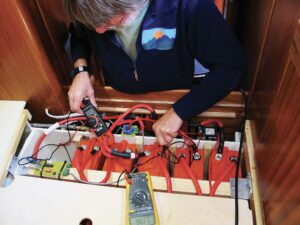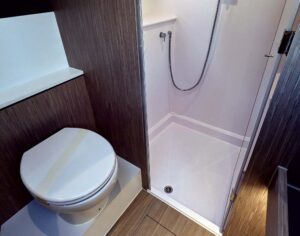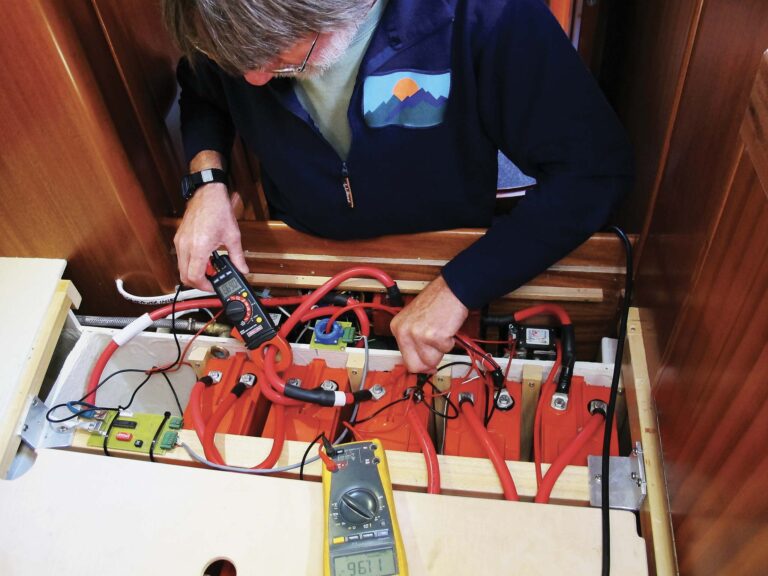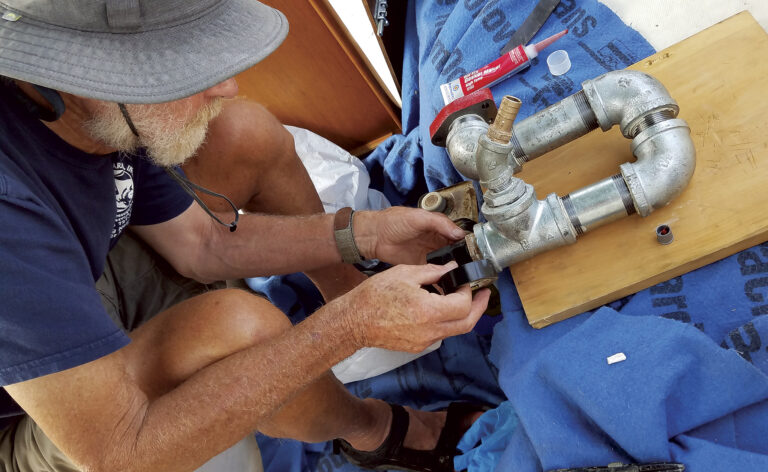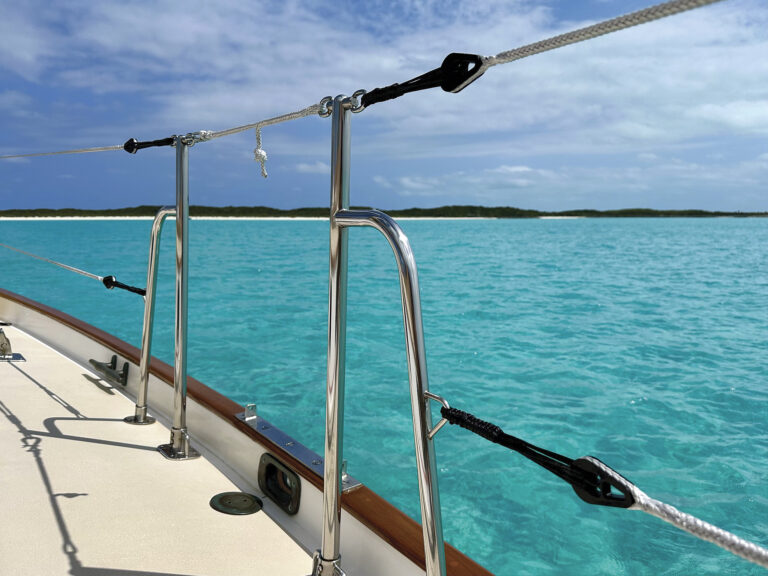With interest rates at historic lows, what are you waiting for? asks SAIL’s Executive Editor Charles Mason
Now that the annual percentage rate (APR) on the unpaid balance of a 15- or 20-year boat loan in some areas of the country is lower than comparable financing for a house, buying a boat just might be a smart decision. If the boat meets certain standards in terms of living accommodations, it can qualify as a second home and the interest on the secured loan becomes tax deductible. Always check with your tax advisor first to get a final determination on what deductions may be eligible. And, like a house mortgage, a boat loan can be refinanced at a later date. But before you sign a promissory note and set sail, let’s review some boat-financing basics. If you’re buying a new boat, your dealer will be able to provide you with a full factory warranty. You are also entitled to have the boat surveyed by a professional before you take delivery. “I urge clients who are buying a new boat to put down at least 20 percent of the purchase price,” says Chuck Laughlin of St. Barts Yachts, a Beneteau and Wauquiez dealer in Charleston, South Carolina. “Doing so not only gets the best rate possible, but that amount is enough to keep them from becoming ‘upside down’—a situation that could occur several years later if they had to sell the boat and its resale value had fallen below their outstanding loan balance. That’s not a good situation to be in.” More money matters below . . .
Laughlin also stresses that buyers should prepare a realistic budget of the boat’s operating costs, which may be higher than expected; dockage payments, for example, can often be a surprise. “Do your homework on insurance, too,” he adds. “My rule of thumb for insurance is one percent and one percent of the whole value.” For a $70,000 boat, for example, says Laughlin, budget a $700 premium and a $700 deductible.
“And whatever you do,” he says, “don’t go on the Internet and make eight different formal applications to finance companies to get the best rate. This will adversely affect your credit score and may also expose you to identity theft.” A far better procedure, he says, is to work with a dealer or a banking institution and get a preliminary approval for a certain amount. Then you can start looking for a boat you can afford.
“When you’re borrowing money to buy a boat, always be honest about yourself,” says Charlie Segal, a veteran yacht-finance specialist and broker with Catalina Yacht Anchorage in Marina del Rey, California. “If you’re in the middle of refinancing your house, for example, make sure everyone knows about it because that fact will be discovered, along with any other credit skeletons that may be in your closet.” Not surprisingly, says Segal, the best rates go to those who put 20 percent down and borrow $50,000 or more for 15 years or longer.
“When it comes to borrowing money to finance a boat purchase,” says Don Durant of Cruising Specialists, a major Hunter, Jeanneau, and GibSea/Dufour dealer in Alameda, California, “my advice to clients—and it’s stood up well over many years—is that the price of the boat they buy shouldn’t exceed the amount of their annual income.” Durant also recommends getting all the financing details together before submitting the package to a lender. With a new boat, especially, it makes good sense to put all additional options into the financing package rather than add costs later.
If your new boat is being financed, you should plan to have it documented. Any boat over 5 net tons—the number has nothing to do with displacement but rather with the potential belowdeck storage area—is eligible for documentation by the U.S. Coast Guard. “Because the documentation process is a federal one,” says Durant, “lenders who operate nationally want to deal with only one set of title laws, the federal ones, rather than working with 50 different sets.”
“The one thing you don’t want on your record when you’re applying for a loan to buy a boat,” Durant says, “is revolving credit-card debt. While you may think you have it under control, that kind of debt knocks down your credit score and makes lenders edgy. If they see debt totaling more than 40 percent of income, they really get skittish.”
“Revolving debt,” adds David Trostle, a vice president of Edgewater, Maryland based Sterling Acceptance Corporation, a marine-finance company, “even if it is being properly handled, has a stunningly devastating affect on credit scores.” Besides looking at the credit score and debt/income ratio, Trostle and all other lenders look at an individual’s liquidity—cash on hand—as well as overall net worth. “Do your costs and operating budgets first,” he says, “then locate a lender you would like to work with and stick with him.” Every additional credit inquiry from a potential lender has an adverse effect on a borrower’s credit score. It can also trigger an overlap, where one financial institution winds up looking at two applications from different sources for the same individual. “They don’t like that at all,” says Trostle.
Finally, buyers and lenders must be aware of the effect of depreciation because over time it determines the lender’s collateral and the owner’s equity. In general, the smaller and less popular the boat, the higher the annual depreciation. “For larger cruising boats,” Trostle says, “I’m pretty happy with my new-boat depreciation schedule even though some dealers may think it’s a bit too conservative. My schedule shows a boat depreciating by 15 to 20 percent of the purchase price in the first year. After that, annual depreciation will run between 6 and 8 percent for up to seven or eight years.” At that point, says Trostle, prices tend to stabilize; thereafter, depending on the model and the current price of new boats, the resale value could actually start to increase.
Which brings up the question of financing the purchase of a used boat. “Generally speaking,” says Cruising Specialists’s Durant, “when deciding how much to lend against boats built over five or six years ago, a lender is going to look carefully at three things. The first is a thorough survey, the second is a published used-boat price from BUC Research, and the third and most important is the financial strength of the buyer.
“You can finance an old boat, even a wooden boat,” Durant adds, “but the older the boat is, the less the lender cares about its actual value and the harder he looks at how he will get paid from a borrower’s other assets.”
“As for buying a new boat, there’s no getting around the fact that depreciation is always tough the first year,” adds Catalina’s Charlie Segal. “But if you buy a popular boat that has been made by a good builder, you can be very pleasantly surprised at how well the boat holds its value over time. And if you’re wise enough to buy one of those boats, the longer you hold onto it the better it’s going to work out for you.”
LENDING SOURCES Arrangement with local dealer
Dimen Marine, dimenmarine.com
Essex Credit, essexcredit.com
First Commercial Corp., boatfinance.com
New Coast Financial Corp., newcoastfinancial.com
Scott Financial, marineloan.com
Sterling Acceptance Corp., sterlingacceptance.com
SunTrust Marine, suntrustmarine.com
Trident Funding Corp., tridentfunding.com

